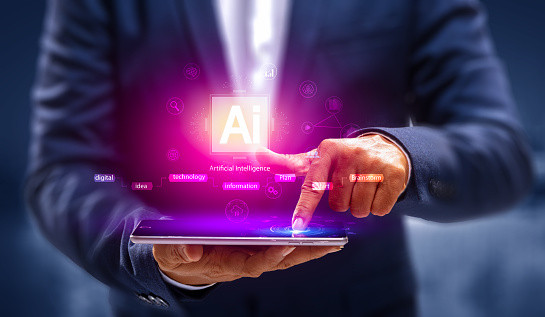
According to the World Bank, approximately 2.24 billion tonnes of solid waste were generated globally in 2020.
Shockingly, this number is projected to increase by 73% to reach 3.88 billion tonnes by the year 2050.
Among the various types of waste, plastic poses a particularly significant challenge. Research conducted by the Universities of Georgia and California estimated that from the 1950s until 2015, over 8.3 billion tonnes of plastic waste was produced.
One individual who has dedicated considerable effort to understanding our waste habits is Mikela Druckman.
As the founder of Greyparrot, a UK-based startup, Druckman has developed an artificial intelligence (AI) system specifically designed to analyze waste processing and recycling facilities.
Her work aims to address the pressing issues related to waste management and recycling.
"In a single day you will have literally mountains of waste in one facility coming through, and what's very shocking and surprising is that it never stops," she says. There are no holidays for waste, it just keeps coming."
Greyparrot's innovative approach involves installing cameras above the conveyor belts at approximately 50 waste and recycling sites across Europe.
These cameras capture real-time footage of the materials as they move along the conveyor belts. Greyparrot's AI software is then employed to analyze and process this visual data.
Indeed, AI technology has made significant advancements in recent years, particularly in image processing and recognition.
However, training an AI system to recognize and categorize different types of waste and rubbish can still be challenging. Waste materials can vary widely in shape, size, color, and condition, which adds complexity to the task.
"A product like a Coke bottle, once it goes into the bin, will be crumpled, crushed and dirty, and makes the problem much more complex from an AI standpoint."
Greyparrot's system has achieved an impressive feat by tracking a staggering 32 billion waste objects annually. Through this extensive data collection, Greyparrot has built a substantial digital map of waste, providing valuable insights into waste management processes.
The information derived from Greyparrot's data can be utilized by waste managers to enhance operational efficiency, enabling them to make informed decisions about waste sorting, recycling, and disposal.
However, the potential impact of this data extends beyond waste management companies alone.
"It is allowing regulators to have a much better understanding of what's happening with the material, what materials are problematic, and it is also influencing packaging design," says Druckman.
"We talk about climate change and waste management as separate things, but actually they are interlinked because most of the reasons why we are using resources is because we're not actually recovering them.
"If we had stricter rules that change the way we consume, and how we design packaging, that has a very big impact on the value chain and how we are using resource."
In a blog post on Footprint's website, Swope claims that consumers are being misled by a "myth of recycling."
He referenced a plastic salad container that was labeled "ready to recycle" and asked what that actually meant.
"It's less likely than ever that their discarded single-use plastic ends up anywhere but a landfill," wrote Swope. "The only way out of the plastics crisis is to stop depending on it in the first place."
So-called greenwashing is a big problem, says Druckman. "We've seen a lot of claims about eco or green packaging, but sometimes they are not backed up with real fact and can be very confusing for the consumer."
The quest for environmentally friendly waste disposal methods continues to be a challenging endeavor. Each year, new trends and developments present unique obstacles to overcome in this pursuit.
One such recent challenge is the increasing popularity of e-cigarettes or vapes, which has led to a surge in electronic waste that poses difficulties for recycling processes.
"It's a huge problem. And it's getting bigger," said Ray Parmenter, head of policy and technical at the Chartered Institute of Waste Management.
He adds that the "fundamental issue" is disposable single-use vapes, which he says "are basically an anathema to the circular economy".
Disposal vapes are composed of many materials - plastics, metals, a lithium battery and some even have LED lights or microprocessors.
The research conducted by Material Focus highlights a concerning trend regarding the disposal of e-cigarettes or vapes in the U.K.
The data suggests that approximately 1.3 million vapes are discarded each week, leading to a substantial amount of electronic waste. This waste includes significant quantities of lithium, a valuable and potentially hazardous material commonly found in vape batteries.
"The way we get these critical raw materials like lithium is from deep mines - not the easiest places to get to. So once we've got it out, we need to make the most of it," says Parmenter.
Vapes are a good example of how we need to change thinking, says Druckman, BBC reported.
"It doesn't make economic sense; it doesn't make any sense. Rather than ask how we recycle them, ask why we have single use vapes in the first place?"
© 2025 Latin Times. All rights reserved. Do not reproduce without permission.




